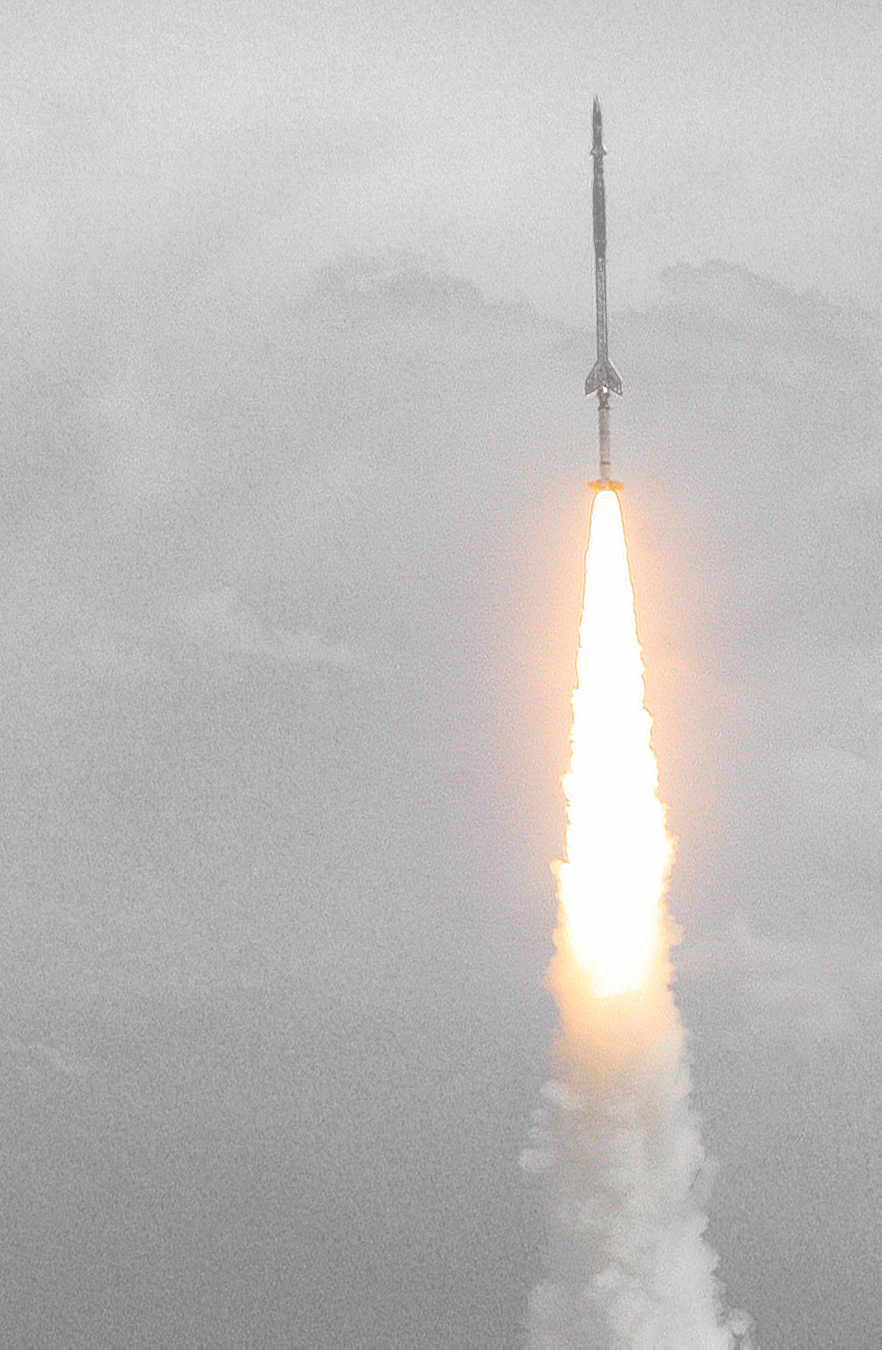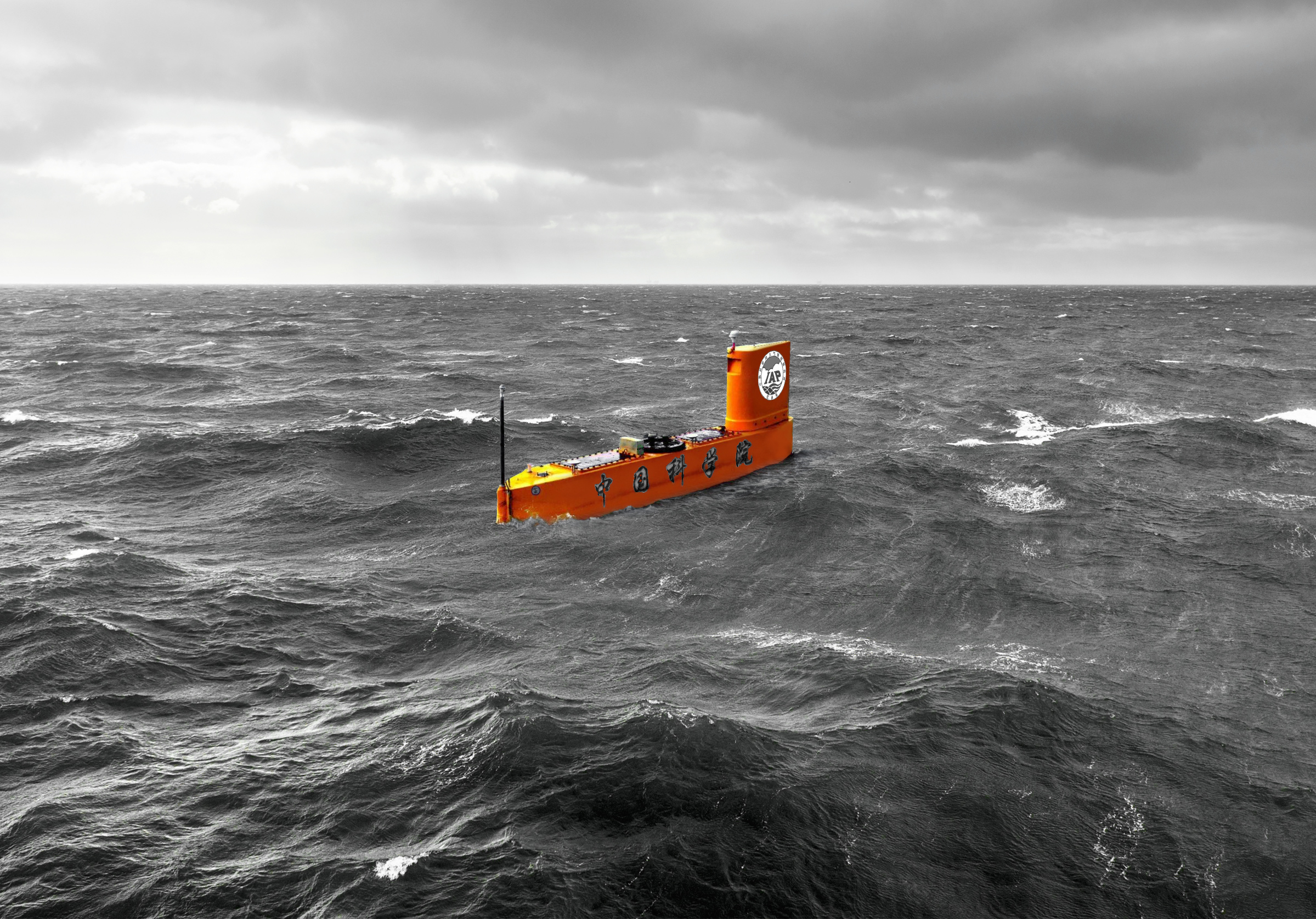digest | The world’s first weather rocket launch from a robotic vessel
February 8, 2019
image | above
China’s robotic ocean vessel.
photo: by Siping Zheng
— contents —
~ story
~ report
~ reading
~ learning + video
— story —
China has built + tested the world’s first robotic, partially submersible boat equipped with a robust system for launching sounding rockets — a technology used by weather scientists (called meteorologists) to better understand the atmosphere over our planet’s oceans. These tests were conducted in years 2017 + 2018 — and published in 2019.
 Essential to environmental knowledge + forecasting.
Essential to environmental knowledge + forecasting.
Weather researchers struggle to study 3/4 of the Earth’s atmosphere located over the oceans. Crew must travel by airplane or ships, deep into aquatic environments difficult to access. These types of expeditions are treacherous + expensive — plus the mission’s opportunities to gather data can be ruined by stormy seas.
Scientists also use buoys or satellites, but these aren’t easy to install over vast stretches of ocean. So sounding rockets are superior scientific tools: gathering data that’s reliable and not patchy.
China’s experiment shows advanced capabilities: navigating hostile marine environments, robotically. And autonomously deploying rockets on-target to complete science missions — in places too dangerous or impassable for human teams to go.
The power of automation + robotics on display.
This combination of un-manned sea travel — plus a complex, remotely-managed rocket launch — is a clear demonstration of what’s to come. China’s successful test heralds a new era of at-a-distance robotics: with applications in defense, search + rescue, exploration, off-shore drilling, ocean fleet management, environmental protection, and a variety of command-and-control systems.
The test is a non-trivial display of the power of automation. The robotic vessel carried extensive electronic instrumentation, requiring high levels of co-ordination + expertise by remote human operators.
Since the crew isn’t physically there on-location: designers of enormous, computerized, mechanical systems of the future can train teams of engineers who won’t be limited by environmental hazard or distance.
The un-manned ship and its rocket system.
China’s ship is technically classified as an “un-manned semi-submersible vehicle.” It’s designed to:
— sail directly into rough marine weather
— deploy a sounding rocket
— collect essential data on the atmosphere + ocean
The ship launched a key tool in weather research called sounding rockets. These rockets make brief flights through different layers of Earth’s atmosphere, carrying meteorological equipment as high as 5 miles above the ocean — higher than weather balloons.
Scientific instruments carried by the rockets make real-time measurements of the sea surface temperature — plus profiles of pressure, humidity, wind speed + wind direction.
Researches at the Chinese Academy of Sciences said: “The un-manned semi-submersible vehicle is an ideal platform for marine weather monitoring + coastal forecasting.”
Their plan is to dispatch a network of these boats to study typhoons — and equip the vessels with different ocean sensors.
image | above left
Artist’s drawing of a sounding rocket.


image | above
A sounding rocket launching for science research.
graphic: NASA
— the report —
group: Chinese Academy of Sciences
group: Institute of Atmospheric Physics
report title: “China launches world’s first rocket deployed weather instruments from un-manned semi-submersible vehicle”
read | report
on the web | reading
South China Morning Post | China military develops robotic submarines to launch a new era of sea power
deck: China’s un-manned AI subs.
Popular Science | These are China’s new underwater drones
deck: Built for deep-sea science.
Daily Mail | China building world’s first fully automated underwater research station
deck: Robotic deep-sea Atlantis.
reading
1. |
Live Science | 24 underwater drones
deck: The boom in robotics beneath the waves.
2. |
Popular Mechanics | 9 deep sea drones that will soon explore the ocean floor
deck: Humanity has only seen 9% of the ocean.
deck: These X Prize challengers want to change that.
X Prize | home
X Prize | prizes: active + past
X Prize | Ocean Discovery • presented by Shell Oil
on the web | learning
SciNews | video: sounding rockets explained
IMAGE
— notes —
AI = artificial intelligence
USSV = un-manned semi-submersible vehicle
NASA = National Aeronautics + Space Admin. of the United States
CAS = Chinese Academy of Sciences
IAP = Institute of Atmospheric Physics
* Shell Oil is under the umbrella of Royal Dutch Shell co.
* X Prize is under the umbrella of X Prize Foundation org.

